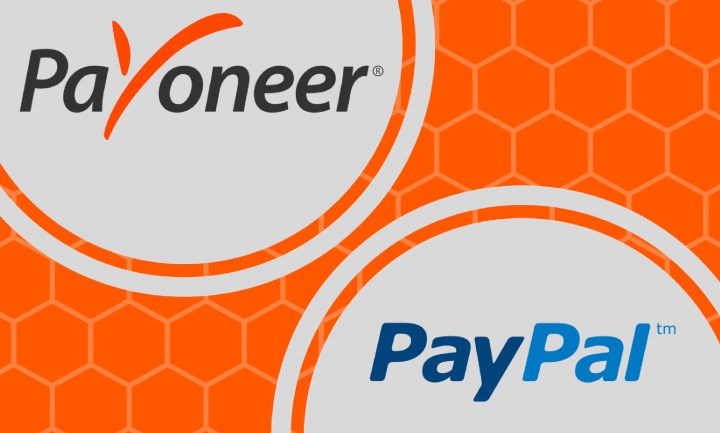Payoneer vs PayPal
Image

Cross-border payments is an industry that seems to stop at nothing to stake out its share in the business world. Competition is rife. Each online payment system wants a large share of the cake. It’s human nature to scrutinize between them to figure out which online payment system meets their needs.
You’ve definitely heard or used PayPal which is almost two decades old now. Payoneer, another quick rising payment system, came into the scene in 2005. These two are currently some of the most dominant online payments that allow a person to make and receive payments online.
But how do you tell them apart? Well, let’s dig into the details to find out.
- Transaction Charges
- Payments and transfers
- Payment request
- Bank Withdrawals
- Countries and Restrictions
- Products and Restrictions
- Conclusion
Transaction charges
Payments and Transfers:
You will incur a loading fee when you use Payoneer. What this means is this: you will part with a fee if you intend to top up your Payoneer account balance. 1 percent of the amount transferred will be deducted when you transfer from your checking or savings account and a 3.75% fee charged when you transfer the amount from your credit card. Annually, you will part with $29.95 as fee for account maintenance. Also you will incur a charge of $3.15 as ATM withdrawal fee and $1.00 for every declined ATM transaction.
Other services are pretty much free of charge, including:
Payments for goods and services
Make a payment service
Receiving payments from payoneer partners such as Upwork, 99 degrees and others.
As for PayPal, no fee is charged when you receive or transfer money from your PayPal balance or bank account to another PayPal account. Note that this only applies to PayPal users within the United States. But if you send the money as a personal payment using your credit or debit card expect a fee of 2.9%+ $0.30. Same fee (+conversation rates if a different currency is involved) also applies when you send or receive money from a country outside the US or between foreign countries. Just like Payoneer, purchasing goods and services attracts zero fees.
Luckily enough for PayPal users, holders of standard PayPal accounts are exempted from any account maintenance charges.
Payoneer is known to offer higher exchange rates and conversion rates and in comparison to PayPal, their fees are slightly lower.
Payment Requests:
Both payment systems let you request for payments from other registered users or companies. Just like with sending a typical invoice, you can look up the option that lets you request payment(s) for services rendered or products, fill it up, and send it over to the targeted company or user.
Bank Withdrawals:
Withdrawing money to your bank account from your PayPal account is costless. Still, you will be charged a fee of $1.50 if you opt for a check. Meanwhile, transferring money from your Payoneer account to your local bank account will attract a fee which mostly varies based on the type of withdrawal you make. For instance, a 1 percent fee will be made when you transfer to a US payment service.
Countries and Restrictions
Neither PayPal nor Payoneer operates in every country.
PayPal has a presence in 202 countries and operates a total of 25 currencies. However, in India, PayPal is not fully functional as it is in other countries due to restrictions and other policies put forth by the Reserve Bank of India, nevertheless, it is still possible to use and many indians are using Paypal.
Payoneer, on the other hand, has a full presence in well over 210 countries except India where initially, it was banned but then resumed with restrictions. Indian users have been excluded from receiving the Payoneer Master Cards plus a couple of other restrictions on the transaction limits.
Other restrictions:
In Europe, the highest you can receive in your PayPal account has been capped at Euro 2500/ GBP 1,900. Personal money transfers will not be accepted via PayPal Japan. What’s allowed is payment for goods only.
Products and Services:
Beyond the typical transactions we've looked, each of these payment systems has invested in other products and services to improve user experience.
Payoneer, for instance, has the following:
Mass payout services:
This services lets you send payments to dozens of payees at once anywhere. Best of all, the transfer is done almost instant, it's secure, and very cost effective. Bear in mind that Payoneer has presence in well over 200 countries and your transactions can be done in over 150 currencies.
Prepaid MasterCard:
This has to be one of the most excellent things about Payoneer. Registering for a Payoneer account entitles you to a Payoneer MasterCard which you can request and have it delivered right to your doorstep in all countries and regions where it has presence. You can use the card to make ATM transactions, online payments and a ton of other uses.
Other services and products from Payoneer include:
Billing service
Escrow for marketplaces
Integrated payments API
PayPal has a ridiculous list of services and products. Just like Payoneer, it also has a mass payment system that lets you send out mass payments at a rate of 2% capped at $1 for each transaction.
Merchants also have the option to pick from its three processing options that include:
PayPal Express Checkout
Payment Payments Standard
PayPal Payments Pro
Each of them brings its own special and unique features that let users have access to excellent services and experiences.
Other services to expect from PayPal include:
Payflow Payment Gateway
Virtual Terminal
Bill me later
Digital good
One Touch feature
POS system
Fundraising features
Contactless payments
Pre-auth
Recurring billing
And many others
To put it simply, PayPal strives to create something for everyone by giving their users multiple payment options, diversified features, and dozens of correlated platforms where they can carry out different transactions and have a friendly user experience. Payoneer might not offer much but so much can be anticipated from them as they grow to become a dominant online payment system.
Conclusion
To sum up, looking at the service fees, Payoneer seems to have an edge over PayPal when it comes to larger transactions. Smaller transactions are pretty cheaper when you use PayPal. Users of PayPal in the United States also enjoy a lot more than other global users due to its convenience. Restrictions also position Payoneer as a better alternative to PayPal. On top of that, the Payoneer Mastercard guarantees you a list of great benefits top amongst them being letting you withdraw payments from any MasterCard branded ATMs, receive payments from renowned affiliate networks, shop online and offline in local stores and so much more . However, on products and services, PayPal easily wins over Payoneer due to their multiple partnerships with different platforms and a long list of products and services devoted to refining the user experience.





